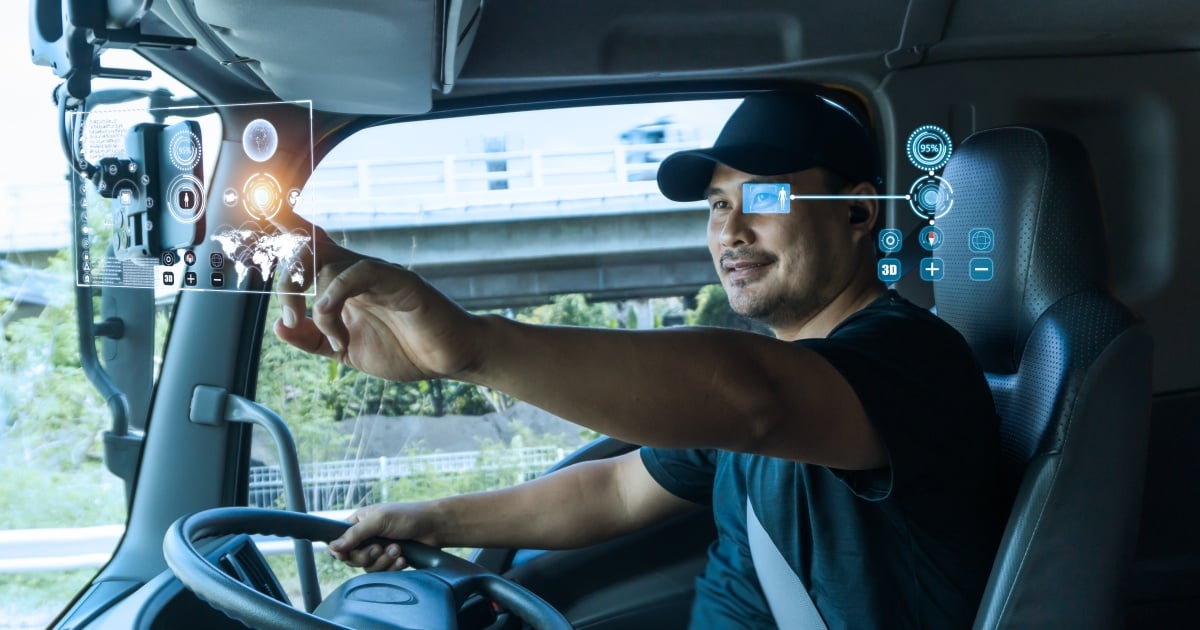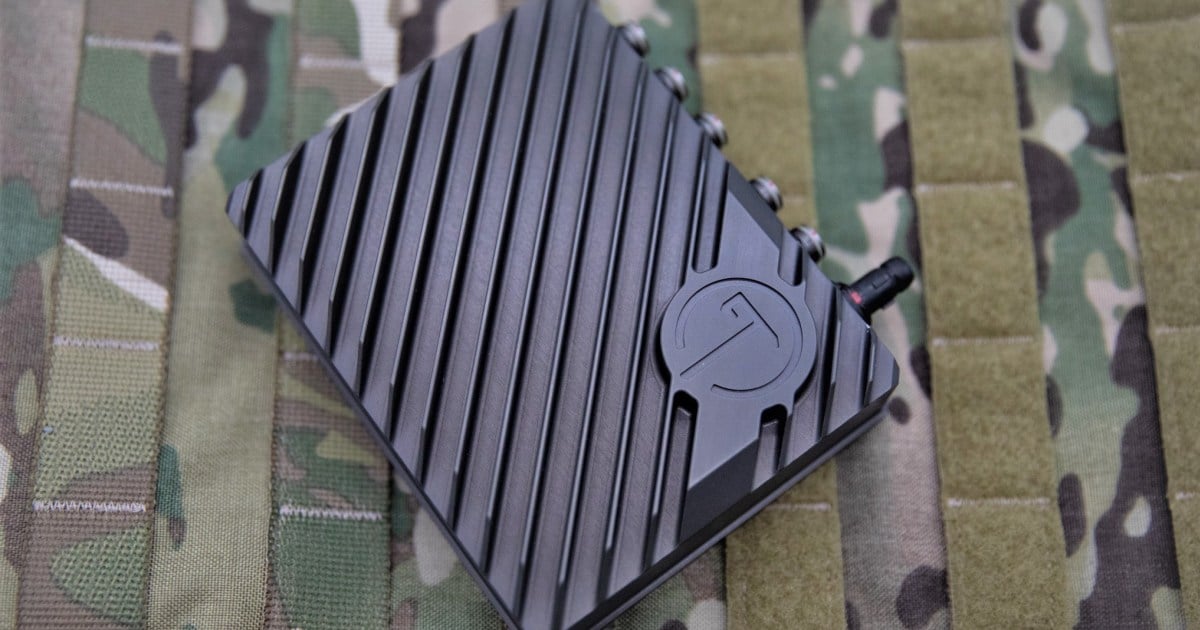IoT Evolution, the leading media brand for the Internet of Things (IoT), has published a book outlining more than 150 of the leading trends in the IoT industry, entitled “IoT Time: Evolving Trends in the Internet of Things.” The book, written by IoT Evolution Editorial Director, Ken Briodagh, seeks to explore the factors that have shaped the recent past of the developing industry and use those to predict the trends that will drive the next period of growth. Each of the trends is explicated and illustrated with a case study or product review that supports each position.
In this weekly series, we’ll be previewing chapters for you to read in the hopes that you’ll like enough to read the whole thing. To do just that, for free, click here. Alternatively, there’s a paperback version available on Amazon for $14.99.
Chapter 8: The Edge
Trend: The Edge rises
Chinese IoT Edge Computing Consortium Established
In China, a joint venture by Huawei Technologies, Shenyang Institute of Automation of Chinese Academy of Sciences, China Academy of Information and Communications Technology (CAICT), Intel Corporation, ARM, and iSoftStone has resulted in the Edge Computing Consortium (ECC) officially being established in Beijing.
The ECC’s stated goals include building a cooperative platform for the edge computing industry that will give impetus to openness and collaboration in the Operational Technology (OT) and Information and Communications Technology (ICT) industries, nurture industrial best practices, and stimulate the healthy and sustainable development of edge computing.
“In the 13th Five Year Plan, China launched two national strategies, integration of digitization and industrialization, as well as ‘Made in China 2025,’” said Yu Haibin, Chairman of the ECC and Director of Shenyang Institute of Automation, the Chinese Academy of Sciences. “This requires much on ICT and OT convergence. Edge Computing is key to supporting and enabling this convergence. Meanwhile, industrial development is also facing a turning point. Industrial automation technology systems will evolve from layered architecture and information silos to IoT, cloud computing, and Big Data analytics architecture. Amidst the evolution, edge computing will bolster distributed industrial automatic self-control architecture. Therefore, the ECC will keep an eye on the design of the architecture and the choice of technical roadmap, as well as promoting industrial development through standardization. In addition, building an ecosystem will also be focused.”
The ECC is in pursuit of the OICT concept that OT, information technology (IT), and communications technology (CT) resources should integrate and coordinate with each other, and stick to the spirit of consensus, unity, and win-win cooperation, to drive forward the ECC's healthy development. The ECC strives to advance cooperation among industry resources from government, vendors, academics, research, and customer sectors.
Trend: The Fog rolls in
Time to Apply Fog Computing to IoT
Fog computing, a term coined by Cisco, was probably the company’s attempt to corner the market before there was one – at least at first. Now, however, the term has become the basis for network solutions, including in IoT. Fog computing architecture is all about distributing data processing and operation procedures over various devices that are connected via the Internet to the cloud (i.e. a virtualized computing environment), as well as to many other devices located in the network (the edge).
One of the key features of fog computing is the vertical distribution of functions by layers that extend from sensors, then in the fog, and, finally, in the cloud depending on the processing latency. This architecture implements high-latency (days to months) enterprise operations in the cloud, whereas technical operations with low latency (milliseconds to hours), starting from high speed to transactional analytics, are realized in fog nodes at the edge.
Fog has some interesting capabilities. With fog computing, latency is minimized if one uses edge gateways for data analysis without sending it to the cloud. All event aggregation is performed in the distributed architecture, moving capacity from the cloud to the edge.
What’s more, it’s often a more cost-effective choice. Virtualization means that processing resources will be more effectively used, so costs are distributed and more manageable. Finally, Fog gateways are easily protected with good encryption and revolving, unique keys, and with distributed computing it’s quite a bit harder to get access to all the data in a system, unlike with centralized server banks.
Trend: Machine Learning
Machine Learning at the Edge is the Future of the IoT
Data is a bit like Midas’ gold. You want it, but the price is pretty heavy. The cost of mining all that data gold from your IoT sensors is that it’s meaningless and valueless until you interpret it and organize it into actionable information. One method for taking that process out of the manual has been clever application of a variety of algorithms to divide up the incoming data and place it in appropriate buckets for review. But why stop there? That’s the question asked by Jamie MacLennan, CTO at predictive Big Data analytics firm Predixion. He says the answer isn’t in a simple algorithm. The answer, he says, is in his Machine Learning Semantic Model (MLSM).
“The convolutions you have to do to get the data to work for an algorithm is typically beyond human skill,” he said. “The MLSM allows you to work with broad categories of data points that will show you trends and help you know how to take action by doing the work of fitting individual datum into the categories.”
This, he said, is known as working with the schema rather than the data: a more helpful level of information knowledge for humans. A basic schema for use in the IoT, for example might include: device id, session id, sensor value and time stamp. So, as the raw data comes in, the MLSM would determine into which of those four categories each bit of data should go, allowing the human reviewer to more efficiently see patterns and make decisions.
Because this happens automatically, not in the cloud, but at the edge, right where the data is needed and can be acted upon quickly, MLSM becomes ideal for IoT.
“MLSM can be deployed in any modality,” he said. “There isn’t an IoT scenario where it’s not usable but it’s best for predictive maintenance like for medical equipment, infrastructure or supply chain.”
Trend: Distributing the wealth
Capitalizing on IoT's Opportunity at the Edge
The IoT is helping many organizations find new revenue from all the IoT data being created at breakneck speeds throughout the IoT ecosystem. But to capitalize on that data, it has required companies to bring data analytics closer to the source of data to allow actions as quickly as possible.
With the right sensors, measurements, and analytics, new information can be extracted from existing processes to generate new and quantifiable business value – such as predictive maintenance, additional efficiencies, and even new services for customers. Properly architected IoT intelligence systems at the network’s edge, where data is collected, will open up new services to enable retailers to increase revenues by customizing the shopper’s experience, financial institutions to protect themselves by analyzing trades and communication in real time to stop noncompliant transactions, retailers and manufacturing organizations to reduce costs by optimizing inventory and tracking operations, and industrial plants to track and analyze sensor data at any edge node.
Organizations must look to high-performance, high-efficiency and compact platforms to reap the benefits from IoT insights. As such, IoT analysis demands a new edge-computing architecture. It has to be more responsive, easy to use, able to analyze all data structures, text, images, videos, and binary data, use the limited power and network resources at the edge efficiently, and can be integrated into distributed data center clusters. Organizations that adopt proper edge computing techniques will have a significant advantage over their competitors when it comes to rapid business decisions, and will be able to garner impressive ROI based on a wide variety of IoT data and their data analysis infrastructure.
Trend: Evolving computing
Variety at the Edge
First generation IoT products are usually all about the “thing”, the product, but the siloing that comes along with that makes it hard to scale. More companies are realizing that they need to design solutions that will enhance business.
One way companies can streamline their deployments is by standardizing the interfaces. Relying on APIs across different silos, vendors or packages will lead to a dead end, with no hope for further growth. Instead, the industry needs to produce solutions that can upgrade older equipment with gateways and sensors while creating future-leaning solutions for the next wave of IoT.
IoT solutions will almost never be able to leverage homogenous edge technologies. If companies don’t account for this they will struggle to evolve beyond initial pilots, and they won’t be able to capitalize on near-term legacy opportunities alongside the longer term net new IoT products. The reality of IoT is that the opportunity is broad and systemic. That requires a lot of variety to achieve a critical mass of usefulness. If that’s not believed internally, when customers get a taste of it, they will convey that need for variety and it will be imposed by the market. Projects that are built around technologies that are too narrow or require a specific or type of processor or protocol or pathway aren’t built to support the range of use cases the IoT will demand.
Trend: Enterprise intelligence
HP Enterprise Drives Intelligence at the Edge
Hewlett Packard Enterprise (HPE) has a new IoT systems and networking solutions suite, which is designed to enable customers to more efficiently collect, process and analyze IoT data.
“Hewlett Packard Enterprise has one of the industry’s most comprehensive portfolios of IoT solutions and services, offering compute, connectivity, data analysis, security and a strong ecosystem, all aimed at simplifying IoT for customers and driving business outcomes,” said Antonio Neri, EVP and GM, Enterprise Group, HPE. “The new solutions today are important elements of our strategy of delivering more connectivity and computing power at the edge, and helping customers maximize the value and minimize the risks from IoT at the speed of business.”
Delivering business outcomes quickly and securely requires real-time intelligence to enable real-time decisions. And that means you need computing at the edge of the network. Moving computing power, data acquisition and data management to the edge of an organization’s network, outside of the traditional data center, allows faster access to relevant data, requires less bandwidth to transport useless data, and ultimately accelerates the time to insight for organizations.
The new HPE Edgeline IoT Systems are the result of a joint partnership between HPE and Intel to help deliver proven, open solutions for the IoT market. The HPE Edgeline IoT Systems 10 and 20 sit at the network edge, enabling customers to securely aggregate and analyze data in real-time and control devices and things. The systems have been certified to work with Microsoft Azure IoT Suite and will run Windows 10 IoT for a wide spectrum of industrial, logistics, transportation, healthcare, government and retail applications. HPE Edgeline IoT Systems are available now in the U.S., Europe, the U.K. and Japan.
Trend: Fog for the enterprise
Cisco Turns on the Fog Machine
Fog computing has been a central theme of Cisco Systems’ strategy since it originated the concept, and so it’s no surprise that it’s been one of the main participants providing insight on this important topic. The interplay between cloud and fog was the theme of a keynote speech presented at IoT Evolution Expo by Rodolfo Milito, senior technical leader at Cisco. Chuck Byers of Cisco has spoken about the role of fog computing relative to future ground-based infrastructure to support unmanned aerial vehicles. Gyana Dash of Cisco recently talked about how fog computing can help enable a smart lighting solution.
Milito explained that fog computing, which sits below the cloud layer to allow for faster and more localized decision making, provides a common architecture for industrial IoT. While the cloud is global in time and space, he said, the fog is local in time and space. Fog computing, he added, is a must have for some applications, and a nice to have for other applications. Byers said fog nodes could and should be one of the key sets of capabilities for the ground-based UAV infrastructure that will be needed to enable drones to safely land and rest, recharge, be tested, and the like. And Dash talked about how fog computing can be used to help sense natural sunlight and trigger blinds to open and lights to shut off to make better use of lighting and energy resources. In an environment with one commercial light at 75 Watts, and 120 window lights per building at 9000 Watts, the potential energy savings would be on the order of $236,000, he said.
Trend: Platforms enable the Edge
'PingPong' Edge Platform Ties Field to the Cloud
Communication is the soul of the IoT and it is becoming more and more likely that Fog computing systems will be a primary method of facilitating those M2M communications pathways in the developing industry. Round Solutions, an IoT engineering and service firm, launched its wireless PingPong IoT edge node platform for connecting field devices to the cloud. Round Solutions said that applications could range from cloud-connected oil tanks and intelligent waste bins to managing gateway systems for manufacturing robots.
“Our platform offers software engineers an application-ready, pre-validated data exchange mechanism which eases the IoT integration of any field device,” said Ben Hoelke, CEO, Round Solutions. “With the supplied Open Source PingPong Software Development Kits, the platform can be configured for nearly all IoT applications, such as sensor reading, asset tracking, routers, measurement technology, telemetry and security control. Thus, PingPong offers companies wanting to transfer their data to IoT cloud-servers a complete solution including software libraries and source code.”
The hardware is comprised of an RTOS-supporting, small-form factor board with a 32-bit MCU processor and a high-speed cellular Telit module. It’s based on a modular hardware design principle designed to make it easier to integrate custom applications and communication standards into a single solution platform for specific commercial uses.
The platform offers high-speed cellular modules for IoT connectivity and several interfaces to the field that can be controlled in the cloud. The standard interfaces include Ethernet, USB, CAN and a high-precision Global Navigation Satellite System. Available expansion cards for WLAN, Bluetooth, I/0, Iridium satellite communications, ISM/RF, Sigfox, NFC/RFID and camera connectivity will help developers apply the platform to almost any scenario.
As more and more solutions come into play for leveraging the edge, fog computing is only going to become more important for making IoT solutions pervasive across all industries.
Trend: Analysis in real-time
Predixion Software Brings Advanced Analytics to the Edge
The power of fog computing is its ability to let enterprises make mission-critical decisions faster and closer to the edge. A sensor network is only as valuable as the intelligence that can be gleaned and strategic analytics is the path to that value. Predixion Software, a developer of cloud-based advanced analytics software, has created the Predixion Insight software to enable analytic models to run directly within the cloud, at the gateway and on devices, so organizations can perform real-time analytics and automated actions at the edge. This enables more nimble operations and efficient decision-making.
“The value of IoT-connected machines will only be realized if organizations can understand and leverage the data they produce,” said Jamie MacLennan, CTO, Predixion Software. “Predixion 4.5 allows users to create value from the data generated from the IoT by efficiently deploying advanced analytics in any modality to improve operations, reduce costs, enable richer customer experiences, and improve patient care.”
Predixion Insight’s patent-pending Machine Learning Semantic Model (MLSM) technology makes it ideal for IoT analytics solutions. It provides flexibility in predictive placements, or the ability for advanced analytic packages to be embedded directly into a variety of production environments. Unlike traditional analytics tools which can struggle with analyzing streaming data after it’s collected, Predixion Insight analyzes live data on the edge.
“What Predixion has done to simplify the deployment of advanced analytic models into production environments is outstanding. But the ability to enable on-device deployment is a real game-changer,” said Oliver Downs, Chief Scientist at big data analytics company Globys. “Getting advanced analytics on the edge to take action is the ultimate payoff of big data and the Internet of Things, and Predixion makes that possible.”
In addition to the MLSM at the heart of the tech, Predixion Insight 4.5 delivers several new capabilities. It can quickly deploy predictive analytics by generating source code and facilitating deployment of the MLSM package to devices, gateway or cloud. While being faster, it also achieves greater accuracy with new algorithms optimized for IoT use cases and eases collaboration across teams by sharing models and results over the Web, email, and social media.
Trend: Partnerships
IoT Giants Create Open Fog Consortium to Rule the World
A coalition of leaders in the IoT industry, including ARM, Cisco, Dell, Intel, Microsoft, and the Princeton University Edge Laboratory have joined forces to create the OpenFog Consortium, with the goal of acceleration of Fog computing technology deployment for the good of the industry. The Consortium will focus on the development of an open architecture, core technologies with the capabilities of distributed computing, networking, and storage, and offering industry leadership that is very much needed to bring the IoT to its best case implementation. The OpenFog architecture is designed to bring intelligence from the cloud to IoT endpoints using an open standard. These founding members are committed to building the initial frameworks and architectures that will reduce the time required to deliver the end-to-end IoT scenarios.
In this weekly series, we’ll be previewing chapters for you to read in the hopes that you’ll like enough to read the whole thing. To do just that, for free, click here. Alternatively, there’s a paperback version available on Amazon for $14.99.
Edited by
Ken Briodagh





